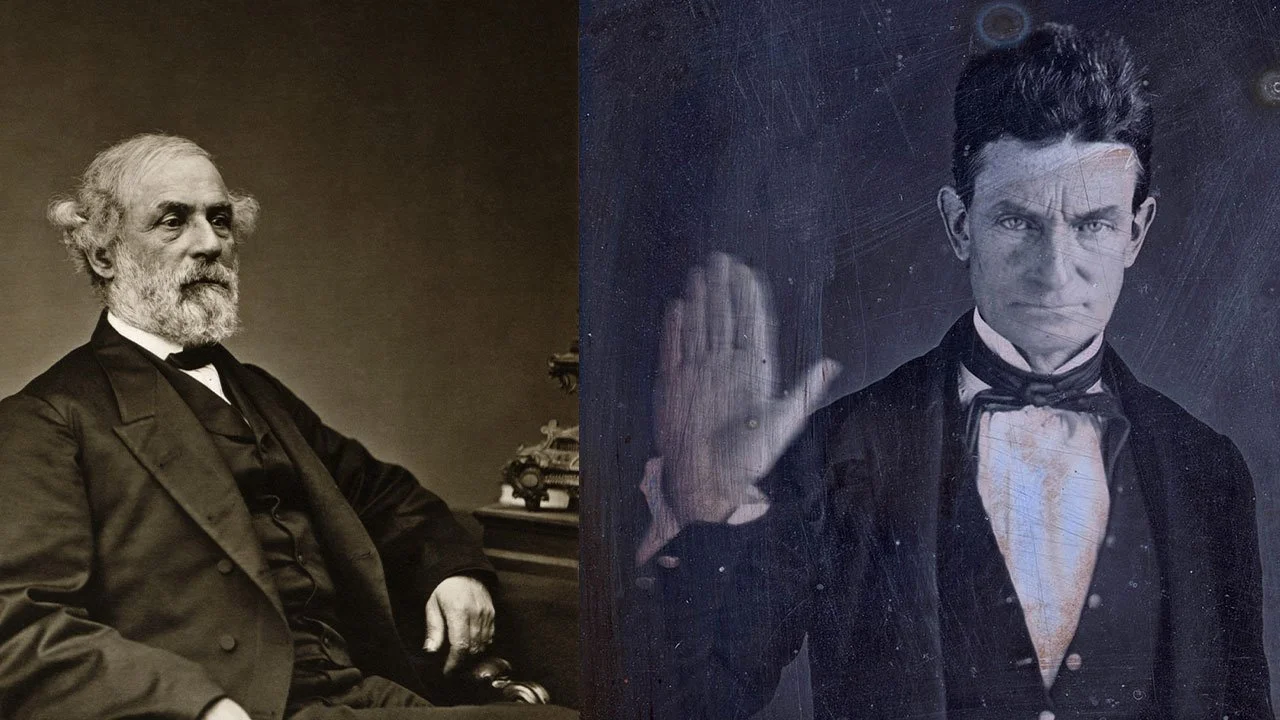John Brown v Robert E. Lee: Who Was the Patriot, and Who the Traitor?
Robert E. Lee sent over 200,000 men to their deaths and cost another 150,000 United States soldiers, in the name of enslaving other people. John Brown defended enslaved people’s right to exist.
America still treats John Brown like a terrorist and Robert E. Lee like a gentleman. Let’s talk about who fought for freedom—and who killed for slavery.
Somehow, John Brown, who gave his life trying to end slavery, is still treated like a national disgrace, while Robert E. Lee—who led a brutal war to EXPAND slavery—is treated like a misunderstood patriot. This isn't just bad history, it's a moral failure with real consequences for how America remembers resistance, race, and justice.
TL;DR:
John Brown fought and died to end slavery. Robert E. Lee killed to keep it. Yet somehow Brown is labeled a terrorist and Lee a hero. It's time to flip that narrative and tell the truth about who really betrayed the United States of America.
John Brown believed slavery was a sin against God and America. He tried to spark a slave uprising—not to terrorize civilians, but to help enslaved people walk off plantations and defend themselves if attacked. For that, he was hanged. Robert E. Lee took up arms against the United States of America to defend the “right” of wealthy landowners to enslave human beings. He violated his military oath, waged war on his own country, and led men into battles that killed hundreds of thousands—to protect white supremacy.
Before Harper’s Ferry, John Brown’s family was targeted by pro-slavery terrorists in Kansas known as Border Ruffians. They murdered, burned homes, and rigged elections. Brown acted in self-defense and preemptive protection of his family. Lee, on the other hand, enforced terror as law. Before the Civil War, he commanded the violent recapture and whipping of escaped enslaved people. During the war, he allowed Confederate troops to kidnap free Black people in the North and sell them into slavery in the South.
John Brown died for freedom, Robert E. Lee died demanding war
John Brown was captured and executed in 1859 after his raid on the federal armory at Harper’s Ferry. His death electrified the abolitionist movement. Even Frederick Douglass, who was against the plan, said Brown’s gallows became "a cross." Robert E. Lee surrendered in 1865, but never apologized for his treason. In fact, he helped fuel the “Lost Cause” myth that rebranded the Confederacy as noble, romantic, and non-racist. That myth lives on in monuments, textbooks, and Sunday sermons.
Brown led a raid. Lee led an army. Brown had fewer than 25 men. Lee commanded hundreds of thousands. Brown’s goal was liberation, Lee’s was domination. So why is Brown called the terrorist and Lee called “the honorable gentleman”? Because of “Lost Cause” Propaganda.
Statues matter. School names matter. What we teach our kids about these people matters. Because it’s not just about the past—it’s about what we value in the present and future. Too many white history lessons do not include those white people who understood where history was leading, those who used white privilege to advocate for others, and those white people who stood up to whiye supremacist bullies.
"His zeal in the cause of freedom was infinitely superior to mine ...
I could speak for the slave. John Brown could fight for the slave.
I could live for the slave. John Brown could die for the slave
—Frederick Douglas
We have to ask ourselves: Do we want to honor people who gave their life trying to end slaveryfor the good of all people—or people who killed to preserve it, for the good of the enslaver class?
Further reading:
Louis A. DeCaro Jr., Fire from the Midst of You: A Religious Life of John Brown
Elizabeth Brown Pryor, Reading the Man: A Portrait of Robert E. Lee Through His Private Letters
David Blight, Race and Reunion: The Civil War in American Memory


